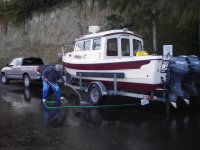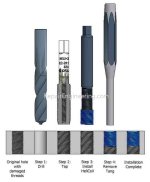thataway
Well-known member
- Joined
- Nov 2, 2003
- Messages
- 21,692
- Reaction score
- 64
- C Dory Year
- 2007
- C Dory Model
- 25 Cruiser
- Hull Identification Number
- DOR25652A707
- Vessel Name
- thataway
colbysmith":3eidk46f said:As a side note, I asked my local shop how they fix stripped out holes for the oil plugs. This was in regard to the Main's engine oil drain. The mechanic said they don't have that issue, as they "suck" the oil out. I wonder if one can really get all the oil out this way? That drain plug is pretty low on the engine. Colby
Colby, I have been draining my outboards thru the drain hole (do use a torque wrench, and one can find the proper size screwdriver bit for the torque wrench.
There are a number who say that can get all of the oil out--and I am going to use longer dip tubes and see if I can on my next oil change.


